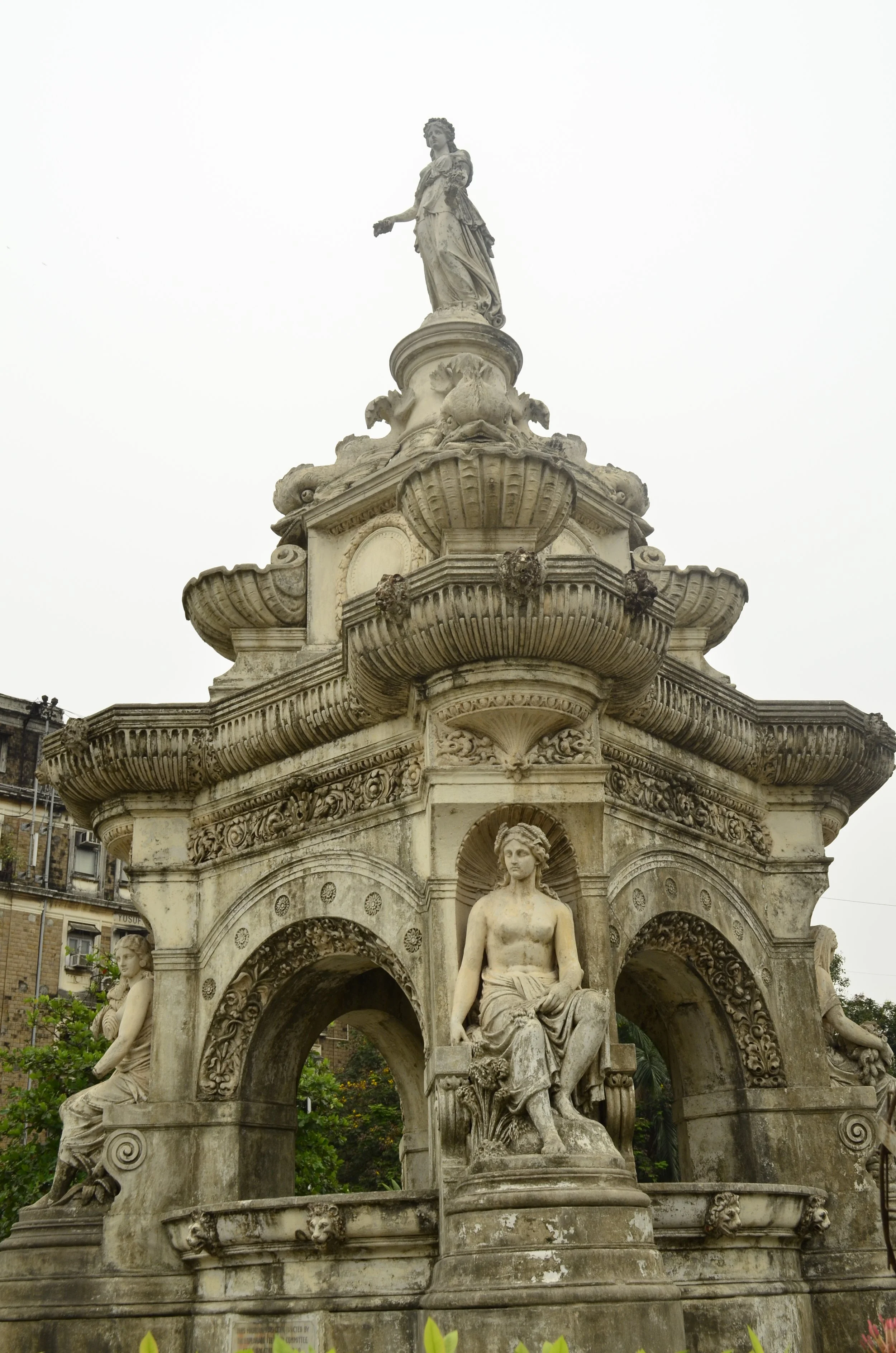Exploring South Mumbai’s Iconic Statues and Their Hidden Histories
Mumbai’s skyline may be defined by its Art Deco facades and colonial Gothic buildings, but look closer, and the city also tells its story in stone and bronze. From colonial governors to freedom fighters and literary icons, the statues of South Mumbai stand as silent witnesses to centuries of history, politics, and changing identities.
Each one has a tale—some of pride, others of controversy, and a few that quietly reveal the layers of Mumbai’s past that many rush past every day. Here’s a guide to discovering these fascinating monuments and the stories they carry.
1. The Rajabai Clock Tower Statues, Fort
Standing tall beside the University of Mumbai, the Rajabai Clock Tower is adorned with Gothic sculptures that many miss while admiring its grandeur. Built in 1878 by British architect Sir George Gilbert Scott, the tower’s carvings depict figures symbolising knowledge, justice, and agriculture—representing the university’s ideals.
When you visit, look closely at the upper niches: you’ll spot finely detailed human forms, mythical beasts, and floral motifs sculpted from Kurla stone. These weren’t just decorations—they were moral lessons in stone, meant to inspire students in the colonial era.
2. The Statue of King Edward VII (Now K.E. Garden), Byculla Zoo
Once a symbol of British imperial pride, the equestrian statue of King Edward VII was moved from its original spot near CST (then Victoria Terminus) to the Rani Baug Zoo in Byculla after independence. Locals often refer to it simply as “the old king on a horse.”
The statue was sculpted by Sir Joseph Boehm and unveiled in 1879. Interestingly, it once stood facing the Victoria Terminus—symbolically watching over his empire. Today, the statue feels out of place among the zoo’s greenery, yet it serves as a quiet reminder of how public art outlives political power.
3. The Flora Fountain Sculptures, Fort
Arguably Mumbai’s most poetic landmark, Flora Fountain stands at the intersection of heritage and chaos. Installed in 1864 and dedicated to the Roman goddess of flowers, Flora, it was designed by sculptor Richard Norman Shaw. The fountain’s carvings celebrate beauty, purity, and nature—an ode to Victorian sensibilities.
When you visit, go early morning or late evening to appreciate its intricate details—nymphs, cherubs, and water motifs that merge Roman classicism with Mumbai’s colonial optimism. Today, after careful restoration, Flora Fountain glows as a serene centrepiece in the city’s busiest business district.
4. The Dr. Bhau Daji Lad Statue at Bhau Daji Lad Museum, Byculla
Standing gracefully in the courtyard of the Dr. Bhau Daji Lad Museum (Mumbai’s oldest museum, established in 1855), this statue honours Dr. Bhau Daji Lad, a polymath and one of the city’s first Indian reformers. Often overshadowed by grander colonial monuments, this statue is deeply significant—it celebrates an Indian intellect who helped shape Bombay’s civic and educational landscape long before independence.
Dr. Lad was a physician, social reformer, and Sanskrit scholar who played a crucial role in establishing the Victoria and Albert Museum (now renamed after him) and in documenting India’s early archaeological discoveries. His statue, sculpted in elegant Victorian style, reflects the rare instance of a native Indian being publicly commemorated during colonial rule.
When you visit, notice how the statue stands framed by the museum’s restored Palladian architecture—ornate cast-iron pillars, tiled floors, and arched galleries. It’s a poetic pairing of intellect and artistry, symbolising Mumbai’s early encounters with modernity and knowledge.
5. The Statue of Sir Pherozeshah Mehta, BMC Headquarters
Just opposite Chhatrapati Shivaji Maharaj Terminus, a commanding statue of Sir Pherozeshah Mehta—the “Father of Municipal Governance in Bombay”—stands in front of the BMC headquarters. Unveiled in 1923, it commemorates his contribution to urban reform and education.
What’s fascinating is its placement: facing the Gothic civic building he helped conceptualise, Mehta’s statue embodies the continuity between colonial administration and Indian self-governance. For photography lovers, this spot offers one of the most dramatic juxtapositions of heritage and history.
6. The Shivaji Maharaj Statue at the Gateway of India
No exploration of Mumbai’s statues would be complete without the towering Chhatrapati Shivaji Maharaj statue standing proudly across from the Gateway of India. Installed in 1961, it symbolically reclaims the space where British troops once departed after independence.
The placement is powerful: Shivaji, the Maratha warrior who fought foreign domination centuries earlier, faces the Arabian Sea, standing as a sentinel of the city’s pride and sovereignty. Visit during sunrise or twilight for stunning silhouettes against the monument and sea.
Why These Statues Matter
Each of these sculptures is more than bronze or marble—they’re markers of Mumbai’s evolving identity. They tell us how the city moved from being the “Urbs Prima in Indis” (the first city of India) under the British to becoming the cultural capital of an independent nation.
To truly experience them, slow down your pace. Walk through Fort, pause at Byculla, wander across the Oval Maidan, and let the city’s stone storytellers speak. In their silent grandeur, they narrate Mumbai’s journey—one of power, protest, and persistence.




